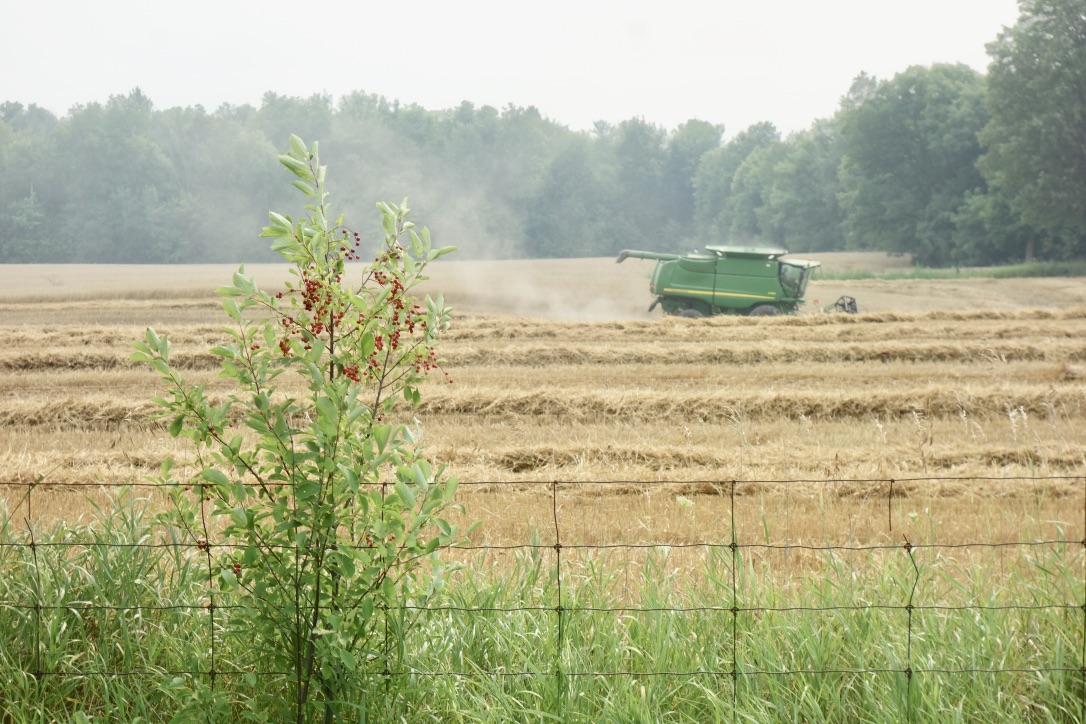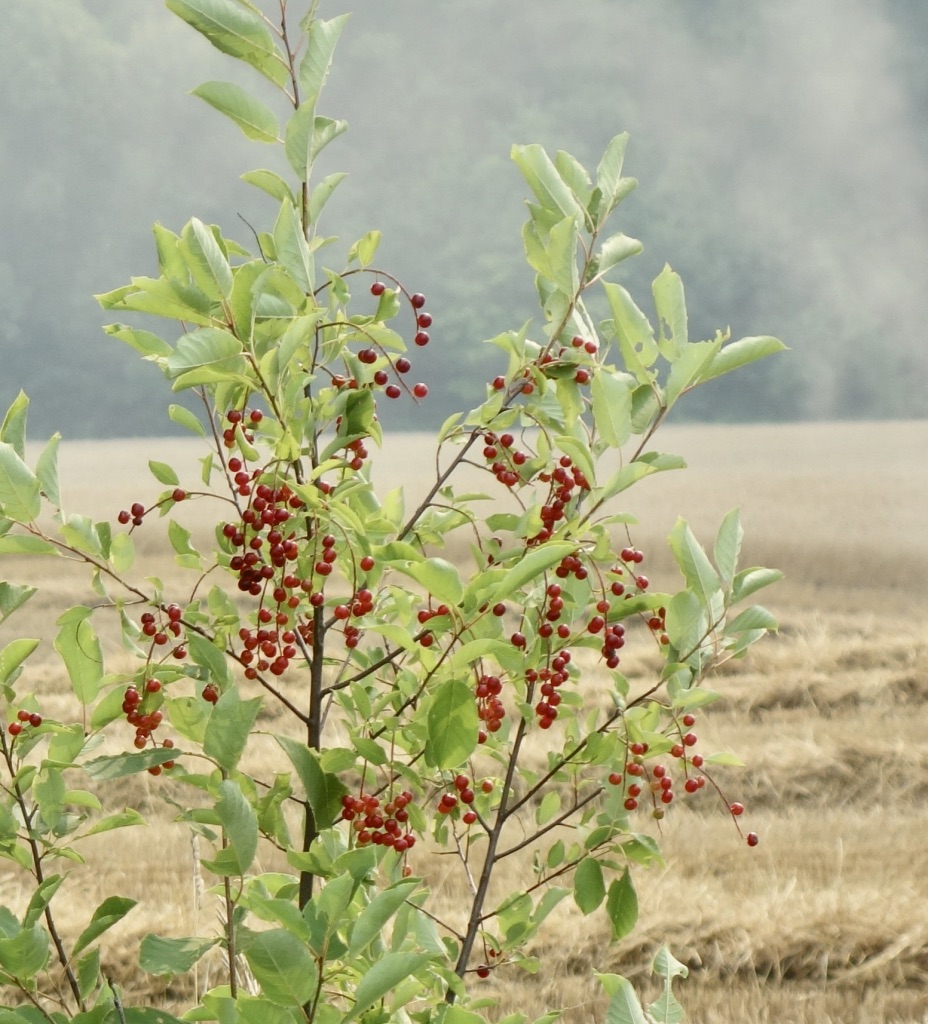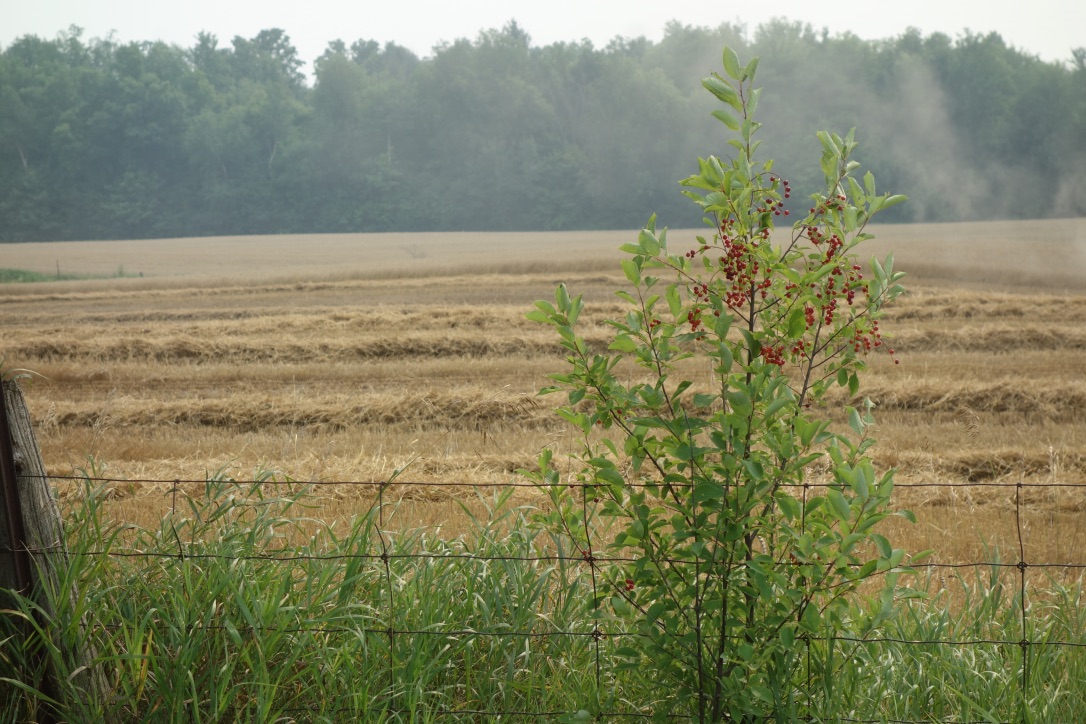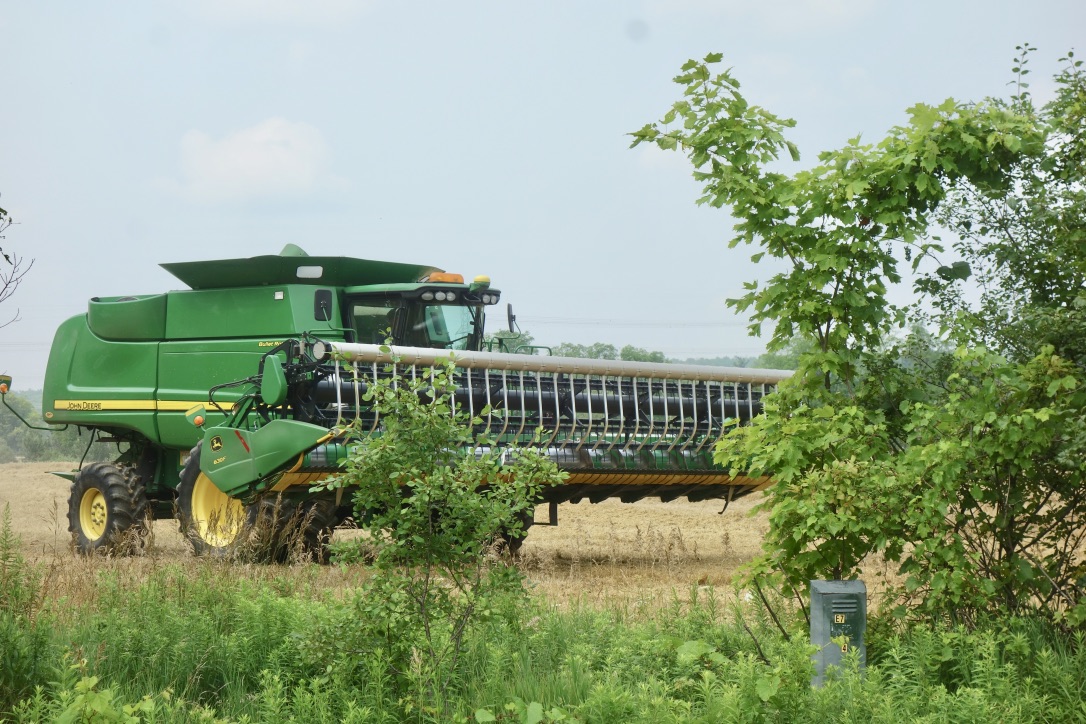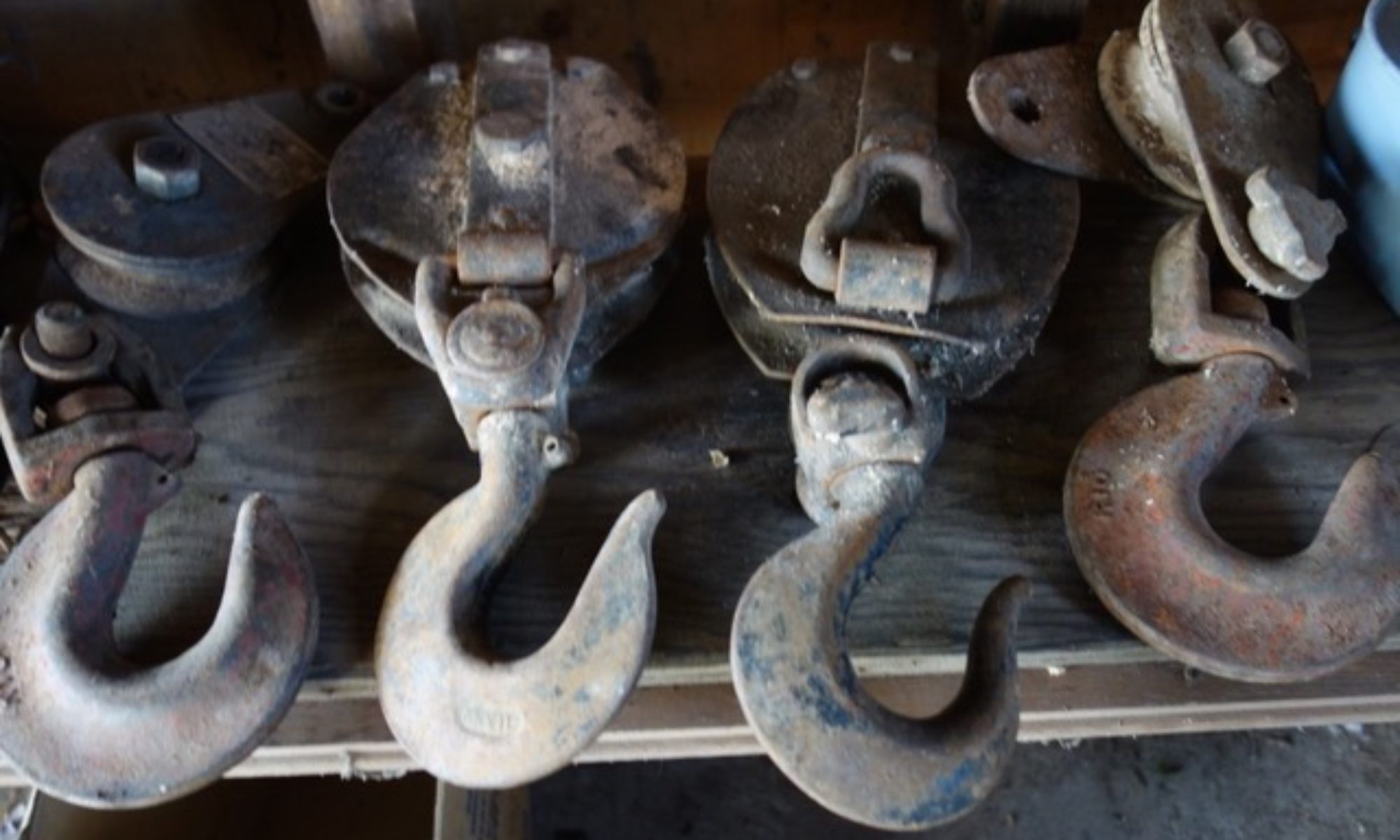EPISODE 394 LOVED TO EAT THEM EVEN IF LEAVES, BARK, TWIGS, PITS WERE POISONOUS
(I did not know they were poison until yesterday July 21, 2021…some 70 years later)
alan skeoch
July 21, 2021
I was photographing the combine as it disappeared on a distant slope. Something odd! In the foreground! Trggering memories.
“GRAB A HANDFULL OF THE BERRIES AS I SWNG THE TRACTOR AND WAGON”, said Angus.
Every threshing season when we were
small was a time of hard labour for all generations. As kids we had various jobs one of which was rearranging ‘stukes’
of bound bundles of grain on the hay wagon. This was a bit tricky in that we were armed with pitchforks and had
to move fast. We did this labour on the Townsend farm, the Freeman farm and the McEchern farm. All Wellington County
farms. Angus McEchern
always steered to the fencerow occasionally so we could feast while working.
QUESTION: WHAT were we eating? Memories of the past were overtaking.
DATE, JULY 21, 2021
I had parked the truck on roadside just to watch the behemoth of a combine busy pounding the heads out of barley
or winter wheat. Amazing process as old as our civilized lives on the moving crust of this planet. Civilized. it
was these tiny grains that changed humans from hunters and wanderers to residents of large cities. First in ancient
Sumer and the city of Ur. Now the site of a bloody never ending war in the middle east. Because of these tiny grains
we learned to write and record our tribulations. Einkorn…a wild grass that has become one of the reasons we have
populated the earth.
Thinking like this I watched the great John Deere combine hammer its way down dip in the field of grain. Like it
was sinking. At that moment I noticed something in the foreground that was vaguely familiar. In the fencerow…reddish
berries on a spindly branch.
“Chokecherries!”
CHOKECHERRIES…AND CYANIDE
Back in the 1950’s we would gobble up great handfuls of chokecherries every time Angus turned the tractor and grain wagon
close to the fencerow. Red berries and dark red really ripe berries. My first taste was disconcerting. The berries made
my mouth pucker…sort of a dry taste that drew saliva. But sweet at the same time. Each berry had a hard pit at its
centre. My mouth soon filled with the pits as the berry juice trickled down my throat of my stomach. I spit out piles
of these pits. Maybe tried to break them open…but failed. Thankfully.
So today I thought I would write an article in praise of chokecherries. Glad I did. Sobering and frightening.
The damn chokecherries are poisonous. Not the flesh of the berries but everything else. Had we Been able
to crack open the pits we would have a mouthful of cyanide. Cyanide! Deadly poison. Some pits must have
slipped down my throat but even the strong acids of my stomach could not break open the pits so they were excreted.
Killed some children according to one source. Most of us were lucky in our ignorance.
Cattle, sheep and horses were not so lucky. Especially if the pasture fields were overgrazed. Then livestock might
turn to the fencerows and began consuming leaves, twigs…even bark..of the chokecherry trees. All are poisonous.
leaves, bark, twigs, pits. Cyanide. Enough to kill livestock? Apparently so. Farmers were urged to remove the chokecherry
trees and shrubs and it seems some farmers did do that for I no longer see great bunches of chokecherries
hanging life grapes. Inviting the picking. Especially when the berries turned a dark red that was nearly black.
We would gather six quart baskets of chokecherries and take them home for mom to make chokecherry jelly which
was great on morning toast. Loved the stuff. Marjorie and I made it in the early years of our marriage. We had
no idea that a cyanide-like poison lurked in those pits that were thrown out in their cheesecloth wrapping.
We were not alone. If you have time punch up chokecherries on the internet. Lots of people sang the praises
of those wild berries. Not so much anymore.
I bet you get distracted by the combine and do not see the little chokecherry bush in the foreground.
POST SCRIPT
Question: I would like your opinion on the edibility of chokecherries (Prunus virginiana). Is it true their berries are poisonous?
I’m a bit confused, as several websites mention that chokecherries are an excellent food for birds and some even say they can be used to make jams and syrups. But what really bowled me over was a page on the Canadian Poisonous Plants Information System. It states “Children have been poisoned and have died after ingesting large quantities of berries, which contain the seeds. All types of livestock can be poisoned by ingesting the plant material.”
I was appalled, as when I was young, we used to eat handfuls of chokecherries straight from the tree and we suffered no ill consequences. How is it possible that the berries can be both poisonous and non-poisonous?
Pierre Nadeau
Answer: I too used to eat the chokecherries as a boy, in spite of their astringent and none-too-sweet taste.
The secret is that it’s the pit (seed) that is toxic, not the fruit’s rather meager flesh. All cherries and other species of Prunus have poisonous pits. They contain amygdalin, a product the body converts into cyanide, a deadly poison, after consumption. However, people usually don’t eat cherry pits, not even those as small as the ones found in chokecherries. Instead, we spit them out, and thus suffer no risk of poisoning.
Cattle and other livestock eat chokecherries whole and can become poisoned if they swallow too many. Note that the text you found on the web specifies in the text that the children who died had swallowed the seeds.
